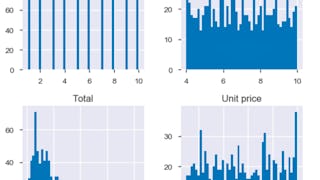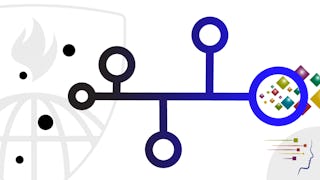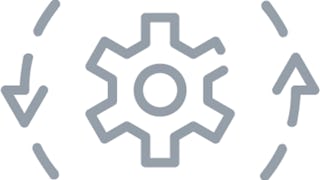In this course, you’ll explore three exploratory data analysis (EDA) practices: cleaning, joining, and validating. You'll discover the importance of these practices for data analysis, and you’ll use Python to clean, validate, and join data.


您将学到什么
Explore the EDA practices of cleaning, validating and joining data
您将获得的技能
要了解的详细信息

添加到您的领英档案
September 2025
5 项作业
了解顶级公司的员工如何掌握热门技能

积累特定领域的专业知识
- 向行业专家学习新概念
- 获得对主题或工具的基础理解
- 通过实践项目培养工作相关技能
- 获得可共享的职业证书

该课程共有5个模块
Missing or duplicate data can appear in datasets for numerous reasons. The impact of missing values can vary depending on how many are present. In this module, you will learn strategies to address missing data entries, determine when deduplication is needed, and use common Python functions for handling duplicates.
涵盖的内容
4个视频1篇阅读材料1个作业3个非评分实验室
Outliers are data points that stand out amongst others. A tactful approach to outliers recognizes the human stories and real-world effects they represent. In this module, you will learn the types of outliers, how to handle them, and visualize them.
涵盖的内容
2个视频2篇阅读材料1个作业
Data models typically work better with numerical inputs. To facilitate this, categorical data is encoded into numeric digits for analysis. In this module, you will learn why this transformation is needed, what dummy variables are, and how to select the right encoding method.
涵盖的内容
2个视频2篇阅读材料1个作业
Input validation focuses on thoroughly checking data for completeness and to eliminate errors. In this module, you will learn why validation minimizes errors, how to detect improper inputs, and why it's essential for joining datasets.
涵盖的内容
2个视频1个作业2个非评分实验室1个插件
Review everything you’ve learned and take the final assessment.
涵盖的内容
1篇阅读材料1个作业
获得职业证书
将此证书添加到您的 LinkedIn 个人资料、简历或履历中。在社交媒体和绩效考核中分享。
位教师

提供方
从 Data Analysis 浏览更多内容

Coursera Project Network
 状态:免费试用
状态:免费试用Johns Hopkins University
 状态:免费试用
状态:免费试用Corporate Finance Institute
 状态:免费试用
状态:免费试用
人们为什么选择 Coursera 来帮助自己实现职业发展




常见问题
Organizations of all types and sizes have business processes that generate massive volumes of data. Every moment, all sorts of information gets created by computers, the internet, phones, texts, streaming video, photographs, sensors, and much more. In the global digital landscape, data is increasingly imprecise, chaotic, and unstructured. As the speed and variety of data increases exponentially, organizations are struggling to keep pace.
Data science is part of a field of study that uses raw data to create new ways of modeling and understanding the unknown. To gain insights, businesses rely on data professionals to acquire, organize, and interpret data, which helps inform internal projects and processes. Data scientists rely on a combination of critical skills, including statistics, scientific methods, data analysis, and artificial intelligence.
A data professional is a term used to describe any individual who works with data and/or has data skills. At a minimum, a data professional is capable of exploring, cleaning, selecting, analyzing, and visualizing data. They may also be comfortable with writing code and have some familiarity with the techniques used by statisticians and machine learning engineers, including building models, developing algorithmic thinking, and building machine learning models.
Data professionals are responsible for collecting, analyzing, and interpreting large amounts of data within a variety of different organizations. The role of a data professional is defined differently across companies. Generally speaking, data professionals possess technical and strategic capabilities that require more advanced analytical skills such as data manipulation, experimental design, predictive modeling, and machine learning. They perform a variety of tasks related to gathering, structuring, interpreting, monitoring, and reporting data in accessible formats, enabling stakeholders to understand and use data effectively. Ultimately, the work of data professionals helps organizations make informed, ethical decisions.
Large volumes of data — and the technology needed to manage and analyze it — are becoming increasingly accessible. Because of this, there has been a surge in career opportunities for people who can tell stories using data, such as senior data analysts and data scientists. These professionals collect, analyze, and interpret large amounts of data within a variety of different organizations. Their responsibilities require advanced analytical skills such as data manipulation, experimental design, predictive modeling, and machine learning.
更多问题
提供助学金,

 中
中

